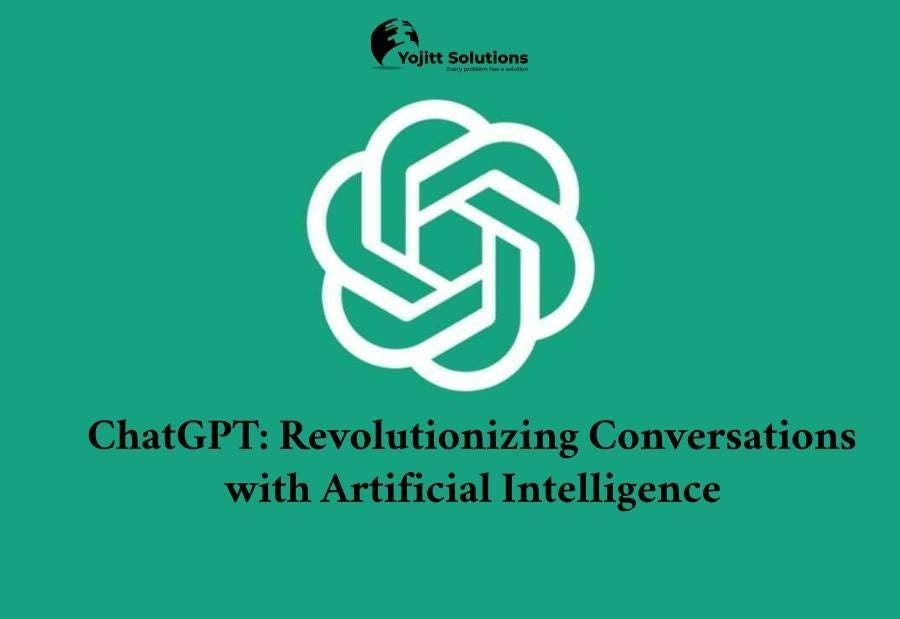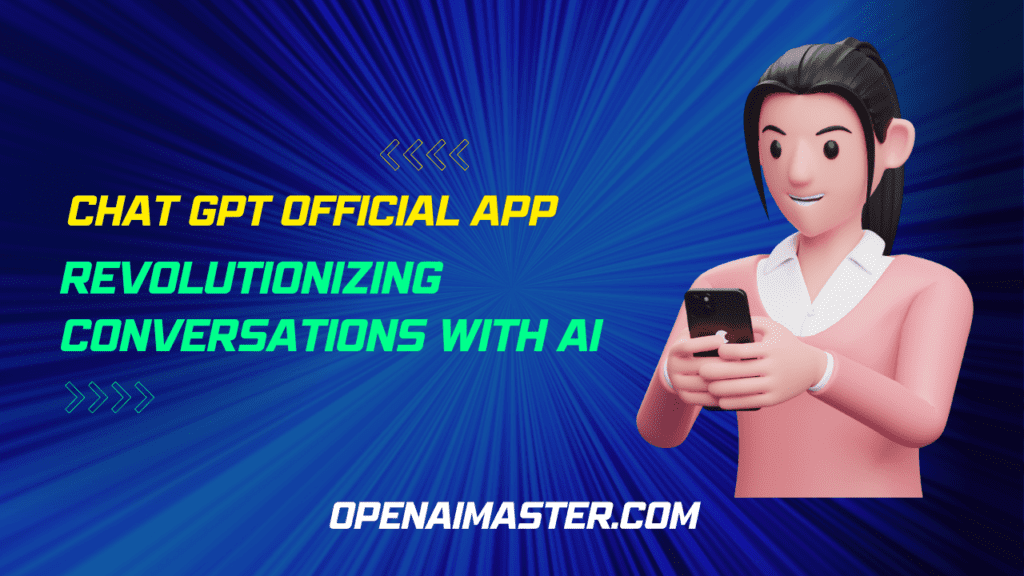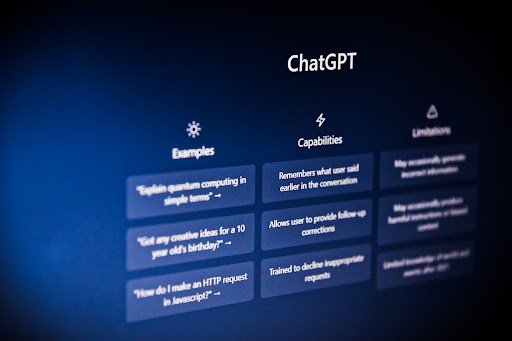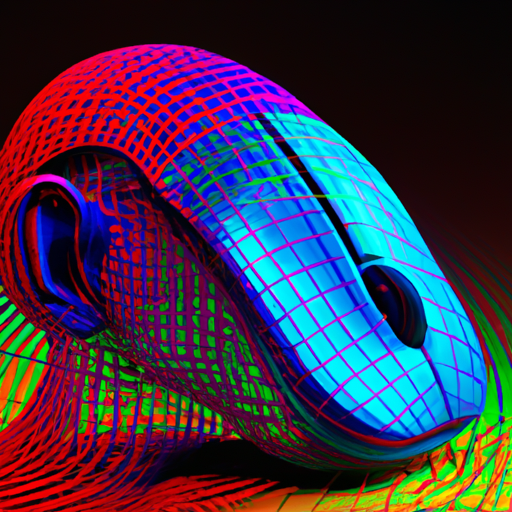


Unveiling The Power Of ChatGPT: How Does It Generate Human-like Text?
August 15, 2023


Enhancing Customer Support With AI Chatbots: Lessons From ChatGPT
August 15, 2023In the rapidly evolving world of artificial intelligence, ChatGPT has emerged as a prominent contender. With its advanced language processing capabilities and ability to engage in coherent and human-like conversations, many enthusiasts believe that ChatGPT has the potential to revolutionize the way we interact with machines. However, skepticism remains as to whether ChatGPT is truly a groundbreaking innovation or simply another iteration of AI technologies that have come before. In this article, we explore the intricacies of ChatGPT, its strengths, limitations, and attempt to ascertain its true revolutionary potential in the realm of conversations.


What is ChatGPT
Overview
ChatGPT is an advanced AI-powered chatbot developed by OpenAI. It is designed to engage in human-like conversations and provide valuable assistance to users across various domains. The underlying technology utilizes deep learning models, specifically the Generative Pre-trained Transformer (GPT) architecture, which enables it to generate coherent and contextually relevant responses. As a result, ChatGPT has the potential to revolutionize the way we interact with AI systems and enhance the overall user experience.
How it works
ChatGPT leverages the power of natural language processing and machine learning algorithms to understand and respond to user queries. The underlying GPT model is pre-trained on a massive corpus of diverse texts from the internet, which enables it to learn grammar, facts, and common sense reasoning. During the fine-tuning process, the model is trained on specific datasets that have been carefully curated and designed to improve its performance in conversational contexts. By iteratively optimizing the model’s behavior, OpenAI aims to ensure that ChatGPT generates helpful and accurate responses.
Capabilities
ChatGPT is capable of understanding complex sentences, engaging in multi-turn conversations, and providing detailed answers to a wide range of questions. It can provide recommendations, explanations, and even engage in creative writing. The model also exhibits a remarkable ability to maintain context and generate coherent responses that align with the ongoing conversation. With its vast knowledge base, ChatGPT can answer queries on a wide array of topics and can assist users in various domains.
Limitations
While ChatGPT has impressive capabilities, it also has certain limitations. Being a language model trained on internet text, it may sometimes generate responses that are factually incorrect or demonstrate biases present in the training data. ChatGPT also tends to be sensitive to slight changes in phrasing, and small modifications to the input can sometimes lead to radically different outputs. Additionally, there is a likelihood of the model making guesses or providing responses that sound plausible but are, in fact, incorrect. OpenAI acknowledges these limitations and actively seeks user feedback to address these issues and improve the model’s performance.
The Evolution of AI Chatbots
Early chatbots
Early chatbot technologies were rule-based systems that relied on pre-programmed responses to specific keywords or patterns. These chatbots had limited capabilities and lacked the ability to understand language nuances or engage in meaningful conversations. While they served basic informational purposes, their rigid nature made them less effective in addressing complex queries or providing personalized assistance.
Machine learning chatbots
Machine learning chatbots marked a significant advancement in chatbot technology. These systems utilized statistical techniques and natural language processing algorithms to improve their ability to understand and respond to user queries. By training on large datasets, they were able to learn patterns and generate more contextually relevant responses. However, these chatbots still struggled with maintaining coherent conversations and comprehending complex contextual cues.
GPT-based chatbots
The introduction of the GPT architecture brought chatbot technology to new heights. GPT-based chatbots, such as ChatGPT, leveraged deep learning models to process and generate human-like text. GPT models, pretrained on massive datasets, have the ability to learn grammar, common sense reasoning, and even specific domain knowledge. This enabled GPT-based chatbots to generate more coherent and contextually relevant responses, pushing the boundaries of conversational AI.
Introduction of ChatGPT
With ChatGPT, OpenAI has improved upon the capabilities of GPT-based chatbots. Through extensive fine-tuning and optimization, ChatGPT exhibits enhanced performance in conversational contexts. OpenAI’s objective with ChatGPT is to provide users with an AI chatbot that can understand and respond to queries with accuracy and coherence, while also addressing the limitations and concerns associated with earlier chatbot models.
The Power of ChatGPT
Natural language understanding
One of the key strengths of ChatGPT is its ability to understand natural language. Through its training on diverse textual data, the model has developed a comprehensive understanding of grammar, idioms, and semantic nuances. This allows ChatGPT to comprehend user queries, even those with complex sentence structures or subtle contextual cues. By interpreting user inputs accurately, ChatGPT can generate more relevant and helpful responses.
Contextual responses
ChatGPT excels at generating responses that align with the ongoing conversation and maintain contextual coherence. By leveraging its large pre-trained knowledge base, it can generate answers that relate directly to the user’s queries. Furthermore, ChatGPT has the ability to keep track of multiple turns in a conversation, ensuring that its responses remain consistent and contextually grounded. This adaptability makes ChatGPT highly effective in offering tailored assistance to users.
Large knowledge base
Unlike earlier chatbot models that relied on specific pre-programmed information, ChatGPT benefits from its training on vast amounts of internet text. This broad knowledge base enables ChatGPT to provide answers across a wide range of topics, exceeding the capabilities of traditional rule-based or narrowly focused chatbots. By drawing on its vast knowledge, ChatGPT can offer useful insights and information to users, making it a valuable tool in various domains.
Adaptability
Another powerful aspect of ChatGPT is its adaptability. The model can be fine-tuned on domain-specific datasets, enabling organizations to create chatbots tailored to their unique needs. By training on relevant data, companies can ensure that the chatbot possesses specialized knowledge and expertise specific to their industry or niche. This customization potential allows ChatGPT to cater to a wide array of users and domains, further enhancing its value.
The Impact of ChatGPT
Improving customer support
ChatGPT has the potential to significantly improve customer support experiences. With its ability to understand natural language and provide contextual responses, ChatGPT can assist customers in obtaining relevant information and addressing their concerns effectively. By offering personalized recommendations and troubleshooting guidance, ChatGPT can enhance customer satisfaction and reduce the load on human support agents, resulting in more efficient and cost-effective support systems.
Assisting with complex tasks
ChatGPT’s large knowledge base and contextual understanding make it a valuable tool for assisting with complex tasks. For example, in technical domains, ChatGPT can provide detailed explanations and guide users through troubleshooting processes. Similarly, in research or data analysis tasks, ChatGPT can offer insights and suggestions to users, helping them solve problems and make informed decisions. By leveraging ChatGPT’s capabilities, users can accomplish intricate tasks more efficiently and with greater ease.
Enhancing user experience
ChatGPT can greatly enhance user experience by providing personalized and timely assistance. By understanding user queries and generating relevant responses, ChatGPT can create engaging and interactive conversational experiences. This not only improves user satisfaction but also fosters a sense of trust and reliability. With the ability to adapt to user needs and preferences, ChatGPT can offer tailored recommendations and suggestions, further enhancing the overall user experience.
Expanding accessibility
ChatGPT has the potential to expand accessibility to information and services. By providing an intuitive and user-friendly interface, it can bridge the gap between users and complex systems or specialized knowledge. ChatGPT’s conversational nature allows users to interact with AI systems using natural language, eliminating the need for specialized training or technical expertise. This can empower individuals with limited access to resources or those with disabilities, enabling them to engage more effectively with technology.


Critics’ Concerns
Potential for misinformation
One of the concerns associated with AI chatbots like ChatGPT is the potential for misinformation. As the model is trained on large volumes of internet text, it may generate responses that are factually incorrect or propagate biases present in the training data. This can be problematic if users rely solely on ChatGPT’s responses without verifying the information from trustworthy sources. OpenAI acknowledges this concern and is actively working on refining the model to minimize inaccurate or misleading responses.
Issues with biases
AI systems, including ChatGPT, can reflect the biases present in their training data. This can lead to the generation of responses that are unfair or discriminatory towards certain individuals or groups. OpenAI recognizes the importance of addressing these biases and is committed to reducing both glaring and subtle biases in ChatGPT’s responses. By leveraging diverse datasets and carefully curating training data, OpenAI aims to make ChatGPT more equitable and inclusive.
Lack of human-like comprehension
While ChatGPT exhibits impressive conversational abilities, it is essential to recognize that it lacks true human-like comprehension. The model operates based on statistical patterns and associations learned from its training data, rather than possessing true understanding or consciousness. This limitation becomes evident in scenarios where deeper conceptual comprehension or reasoning is required. Users must be mindful of this distinction and exercise caution when interpreting ChatGPT’s responses.
Privacy and security
The use of AI chatbots like ChatGPT raises concerns about privacy and security. Interactions with chatbots may involve sharing personal information or sensitive data, which necessitates robust privacy safeguards. OpenAI places a strong emphasis on ensuring user privacy and has implemented measures to protect user data. However, users should remain cautious and adhere to best practices for sharing personal information when engaging with any AI system.
Ethical Considerations
Responsibility of developers
Developers of AI chatbots, including ChatGPT, bear a significant responsibility to ensure that the technology is developed and deployed responsibly. This includes thoroughly testing the system to identify and address potential biases, deploying robust safeguards to protect user privacy, and implementing mechanisms to handle problematic user inputs or potential misuse of the system. Developers must prioritize the ethical implications of their creations and take proactive steps to mitigate any negative consequences.
Ensuring user safety
User safety is of utmost importance when using AI chatbots. OpenAI has implemented safety mitigations during the development of ChatGPT to prevent the model from generating harmful or malicious content. However, it is crucial for developers to continuously monitor and update their systems to address emerging risks and potential vulnerabilities. This includes monitoring for inappropriate content, providing clear instructions to users on the proper use of the system, and ensuring mechanisms are in place to report and handle any harmful use of the technology.
Addressing biases and discrimination
To promote fairness and inclusivity, developers must actively address biases and discrimination in AI chatbot systems. This involves careful curation of training data to reduce biases, regular audits of the system’s performance, and soliciting feedback from a diverse range of users. By implementing these measures, developers can work towards minimizing disparities and ensuring that AI chatbots like ChatGPT provide equitable and unbiased assistance to all users.
Transparency and accountability
Transparency and accountability are vital in the development and deployment of AI chatbots. OpenAI recognizes the importance of open dialogue and actively seeks external input and feedback to improve ChatGPT. By fostering transparency, OpenAI aims to address concerns, share information about the technology’s capabilities and limitations, and allow users to make informed decisions. Holding developers accountable for their systems’ impact is crucial to ensure responsible and ethical deployment of AI chatbot technology.


Applications of ChatGPT
Customer service
ChatGPT can be a valuable asset for customer service departments. Its ability to understand user queries and provide contextual responses enables it to offer personalized assistance, troubleshoot issues, and provide relevant information. By incorporating ChatGPT into customer support systems, organizations can improve response times, reduce human agent workload, and enhance overall customer satisfaction.
Content creation
ChatGPT’s language generation capabilities make it a valuable tool for content creation. It can assist writers, journalists, and content creators by offering creative suggestions, generating storylines, or even proofreading content. By leveraging ChatGPT’s ability to generate coherent and contextually relevant text, writers can streamline their creative process and enhance the quality of their work.
Language learning
ChatGPT can be a powerful tool in language learning and education. By engaging in conversations with ChatGPT, learners can practice their language skills, receive instant feedback on their proficiency, and obtain clarifications on language usage. ChatGPT’s adaptability allows it to cater to learners at various proficiency levels, offering tailored exercises and explanations to facilitate language acquisition.
Personal assistants
ChatGPT can function as a versatile personal assistant, providing users with reminders, recommendations, and information. By leveraging its large knowledge base and conversational abilities, ChatGPT can assist individuals in various aspects of their daily lives. From organizing schedules and providing weather updates to suggesting recipes or guiding users through DIY projects, ChatGPT can enhance productivity and simplify daily tasks.
Interacting with ChatGPT
Training the model
ChatGPT’s fine-tuning process involves training the model on specific datasets that are designed to improve its performance in conversational contexts. OpenAI uses reinforcement learning from human feedback (RLHF) to train the model. Initially, human AI trainers provide conversations and play both user and AI assistant roles. This dialogue data is mixed with the InstructGPT dataset, transformed into a dialogue format. The model is then fine-tuned using Proximal Policy Optimization, resulting in an improved conversational AI.
Providing user instructions
When interacting with ChatGPT, providing clear user instructions can help guide the conversation and elicit accurate responses. Users can specify their information needs, ask for explanations, or specify the context they want the AI to consider. By giving explicit instructions, users can maximize the value they derive from ChatGPT and ensure that the generated responses align with their requirements.
Handling problematic responses
As with any AI system, problematic or incorrect responses can occur with ChatGPT. OpenAI employs reinforcement learning to address harmful and untruthful outputs. Users are encouraged to provide feedback on problematic model outputs through the user interface, helping OpenAI to refine and improve the system. OpenAI is actively seeking user feedback to better understand and address risks associated with ChatGPT’s responses.
Iteration and improvements
OpenAI recognizes that ChatGPT is not a perfect system, and there is always room for improvement. Through iterative deployments and user feedback loops, OpenAI aims to enhance the system’s capabilities, address limitations, and reduce biases. Continuous development and refinement of ChatGPT are key priorities to create a more reliable, trustworthy, and beneficial conversational AI.


Future Developments
Advancements in language models
The future holds exciting possibilities for advancements in language models like ChatGPT. Ongoing research and developments aim to improve model performance, enhance natural language understanding, and generate more coherent and contextually accurate responses. As language models evolve, they will continue to push the boundaries of conversational AI and enable more sophisticated interactions between humans and machines.
Addressing limitations
OpenAI is actively working to address the limitations associated with ChatGPT and similar AI chatbots. Feedback from users plays a crucial role in identifying areas for improvement and refining the model’s behavior. By focusing on reducing errors, inaccuracies, and biases, OpenAI seeks to build a more reliable, trustworthy, and robust conversational AI that maximizes its benefits while minimizing potential risks.
Combining AI technologies
The future development of AI chatbots may involve combining different AI technologies to create more powerful and versatile systems. For example, integrating ChatGPT with speech recognition and synthesis technologies can enable seamless voice-based conversations. This can further enhance the user experience and open up new possibilities for applications in areas such as virtual assistants, call centers, and voice-controlled systems.
Ethical frameworks
As AI chatbots like ChatGPT become increasingly prevalent, the development and adoption of ethical frameworks will play a crucial role in guiding their usage. Ethical considerations like fairness, transparency, and accountability must be embedded into the design and deployment of AI systems. By adhering to ethical guidelines and standards, developers can ensure that the potential risks associated with AI chatbots are mitigated, and their benefits are maximized in a responsible and ethical manner.
Conclusion
ChatGPT, powered by GPT, represents a significant advancement in the field of conversational AI. It combines the power of natural language processing, large pre-trained knowledge bases, and context-awareness to generate coherent and helpful responses. ChatGPT shows immense potential in improving customer support, assisting with complex tasks, enhancing user experience, and expanding accessibility to information and services.
However, it is essential to address the limitations, concerns, and ethical considerations associated with AI chatbots. Potential risks such as misinformation, biases, lack of human-like comprehension, and privacy concerns must be actively managed. Developers and organizations have a responsibility to ensure user safety, address biases, be transparent, and be accountable for the impact of their AI chatbot systems.
As AI chatbot technology continues to evolve, it holds promise for applications in various domains, including customer service, content creation, language learning, and personal assistance. By training the model, providing clear instructions, handling problematic responses, and prioritizing iterative improvements, users can maximize the benefits of ChatGPT.
Looking forward, continued advancements in language models, addressing limitations, combining AI technologies, and implementing ethical frameworks will shape the future development and deployment of AI chatbot systems. As these technologies become more sophisticated, responsible and ethical practices are vital to ensure AI chatbots like ChatGPT are harnessed to their full potential while minimizing potential risks.







